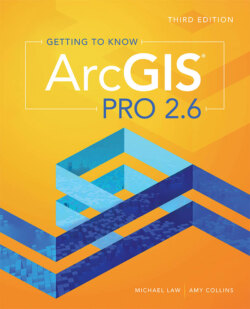Читать книгу Getting to Know ArcGIS Pro 2.6 - Michael Law - Страница 11
GIS today
ОглавлениеGIS has been helping people better understand their world since the 1960s. It provides a framework of practical means for transforming the world with all kinds of activities, from improving emergency response to understanding bird migration patterns. People are integrating GIS into how they work with data because it is a visual, quantitative, and analytic tool. It provides people with the structures and concepts to handle data systematically.
People today have unprecedented access to data and information. A growing system of connected networks allows people to easily access data, collaborate with others, and produce and share results from desktops, laptops, and mobile devices—essentially from anywhere. The current trend of connecting people who work in the office and in the field allows for real-time analysis. Decision-makers use operations dashboards to monitor real-time data feeds and other sources of information. For example, a GIS coordinator for a local government can track real-time emergencies and respond by coordinating fire, police, and ambulance resources.
GIS is pervasive, interactive, and social. Dynamic and interactive maps on the internet, known simply as web maps, are ideal for allowing many users to access and quickly locate features and visualize data. In the past, it took a team of GIS professionals to put together an online map. Now anyone can connect to ArcGIS® Online, make a map with a few layers and a basemap, and then share it with friends, coworkers, or anyone. The latest generation of web maps has simplified that process and now forms a platform that anyone can use.
Governments are opening access to data at an unprecedented rate. The open data movement provides agencies and the public with authoritative data and enables all levels of government to develop new tools and applications. Typically, only highly sensitive data is safeguarded or copyrighted anymore. Open data provides a way for people to extract information when they need it. It allows citizens, organizations, and governments to get right to problem solving, rather than spending a great deal of valuable time searching for and requesting data. ArcGIS® Open Data, an ArcGIS Online solution, allows an organization to host the data it collects so that the public can freely view interactive maps and search for and download data.
Figure 1.3. Governments and organizations share open data through online portals. Michigan Open Data Portal (http://data.michigan.gov).
